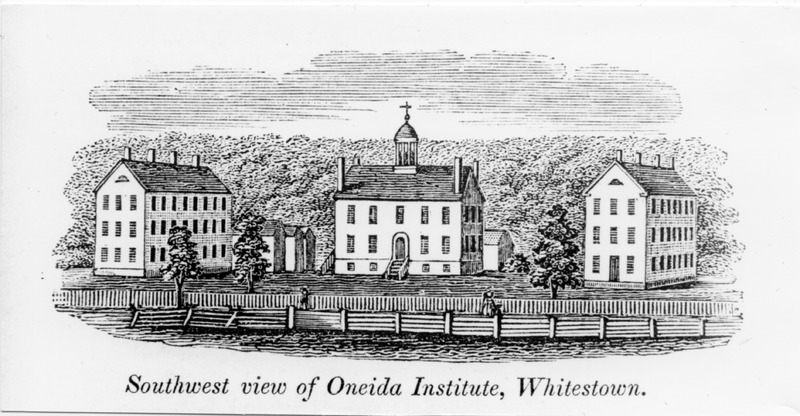RADICAL BLACK ACTIVISTS AND JOHN BROWN
HENRY HIGHLAND GARNET (1815-1882), BLACK CONVENTION ACTIVIST, ABOLITIONIST, MINISTER
Henry Highland Garnet was born in New Market, Kent County, Maryland.
He and his family were enslaved by the enslaver and plantation owner Colonel Spencer [1].
When Garnet was nine, he and his family (11 members, including his mother, father, and sister), escaped slavery and fled to Bucks County, Pennsylvania [2].
Garnet studied at Noyes Academy in Canaan, New Hampshire in 1835 [3].
Garnet then continued his studies at Oneida Theological Institute and graduated in 1840. Despite Garnet’s earlier experiences with white supremacist violence and the belief that violence must be met with physical resistance, throughout the early 1840s (1841-1842), Garnet “had not yet taken a firm position on the question of slave revolts” [4], [5].
However, by 1843, Garnet became increasingly radical: he “slowly came to believe that not only did slaves have the right to rebel, but that abolitionists had the right to support them” [6].
In the collectively authored “An Address To The Slaves Of The United States,” delivered by Garnet at the 1843 National Convention in Buffalo, NY, asserted that enslaved peoples had a “religious duty” to resist slavery [7], [8].
The oration ended with direct calls for resistance and reminders that “no oppressed people have ever secured their liberty without resistance,” and to “remember that you are THREE MILLIONS” [9].
Garnet’s calls for resistance were met with a mix of approval and fear, and delegates at the 1843 Convention failed to pass Garnet’s appeal by one vote [10].
However, by 1848, when the “Address” was published in a pamphlet along with Walker’s “Appeal,” the majority of abolitionists embraced Garnet’s position [11].
Garnet’s influence continued to spread, greatly shaping Black nationalist politics. Throughout the 1850s, tensions continued to mount, and it is during the Bleeding Kansas period (1854-1859) that Garnet most likely first heard of John Brown [12], [13].
Although Garnet began to focus more on advocating for Black emigration from the United States, he was well aware of the increasing violence and “the deepening sectional crisis” [14].
Brown was familiar with Garnet and had been since the 1843 “Address” [15].
Scroll through the slider below, “Events in the Life of Henry Highland Garnet,” for a brief timeline focusing on Garnet’s interactions with Brown.
Credits
Created by Jessica Thelen, PhD student in English, for P. Gabrielle Foreman’s ENGL/HIST 677 class, Spring, 2019. Edited by P. Gabrielle Foreman.
References
[1] Ofari, Earl. “Let Your Motto Be Resistance”: The Life and Thought of Henry Highland Garnet. Beacon Press, 1972, p. 2.
[2] Ofari 2.
[3] Ofari 5.
[4] Ofari 7-8.
[5] Ofari 33-34.
[6] Ofari 34.
[7] For more on the 1843 “Address” and its connections to the Colored Conventions Movement, see Graves, Harrison; Asplaugh, Jake; Spires, Derrick. “Henry Highland Garnet’s ‘Address to the Slaves And Its Colored Conventions Origins.” Omeka RSS.2016. http://coloredconventions.org/address/ .
[8] Bennett, Lerone Jr. Pioneers in Protest. University of Michigan Press, 1969, p. 153.
[9] Garnet, Henry Highland. “An Address To The Slaves Of The United States,” blackpast.org. Emphasis in original text.
[10] Bennett 155.
[11] Bennett 155.
[12] Stuckey, Sterling. The Ideological Origins of Black Nationalism. Beacon Press, 1972, p. 17.
[13] Pasternak, Martin B. Rise Now And Fly To Arms: The Life Of Henry Highland Garnet. University of Massachusetts Press, 1981, p. 83.
[14] Pasternak 94.
[15] Pasternak 94.







